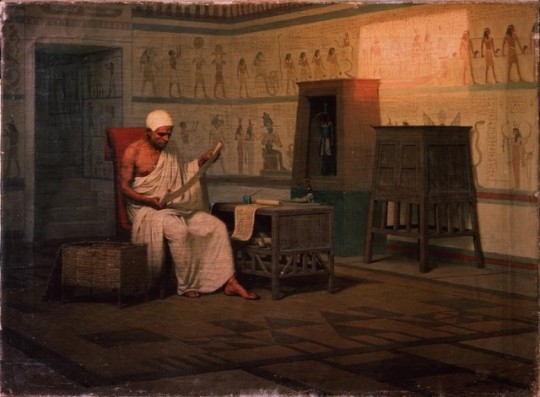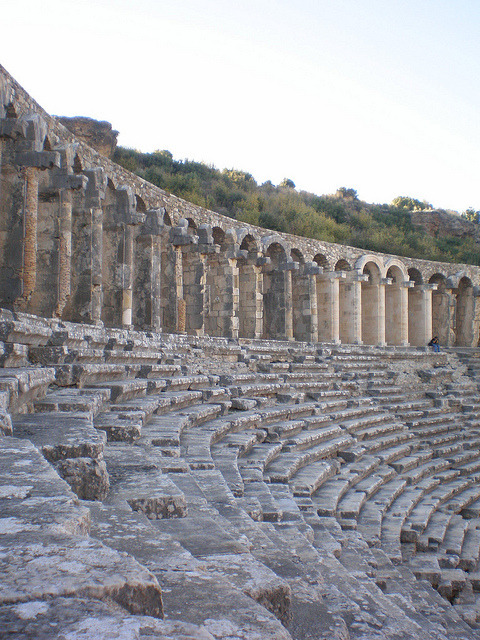Text
Poltross Burn Roman Mile Castle, Hadrian’s Wall, Gilsland, 30.3.19.










498 notes
·
View notes
Text


prid. id. apr. • I Want To Obtain Frescoes
229 notes
·
View notes
Photo

Caeretan Hydria 520-510 BCE attributed the the Eagle Painter and the Busiris Painter. Side A: a human figure fighting a sea monster. Note the seal on the left side of the scene. Marangou 1995. (X)
Read more:
en.wikipedia.org/wiki/Caeretan_hydria
The charm and background of the Caeretan Hydriae by Prof. J.M. Hemelrijk
The Natural History of a Caeretan Hydria by John Papadopoulos
Monk Seals in Antiquity
This happened because of @sisterofiris and The Wilušiad.
190 notes
·
View notes
Photo

Stater, mid 6th century BC, Cleveland Museum of Art: Greek and Roman Art
Size: Overall: 1.6 x 2 x 0.8 cm (5/8 x 13/16 x 5/16 in.) Medium: gold (electrum)
https://clevelandart.org/art/2000.203
20 notes
·
View notes
Photo

Chalcedony scaraboid, Metropolitan Museum of Art: Greek and Roman Art
Purchase, Joseph Pulitzer Bequest, 1942 Metropolitan Museum of Art, New York, NY Medium: Chalcedony
358 notes
·
View notes
Text
Brief Life Update
I graduated with my Master’s degree
I’ll start work in a new city later this summer
My interests are shifting and I want to see where they take me, so this blog will probably be fairly inactive from this point on
Wishing everyone well, &c, &c
4 notes
·
View notes
Photo


Pyramid of Unas
“The sword of Orion opens the doors of the sky. Before the doors close again the gate to the path Over the fire, beneath the holy ones as they grow dark As a falcon flies as a falcon flies, may Unis rise into this fire Beneath the holy ones as they grow dark. They make a path for Unis, Unis takes the path, Unis becomes the falcon star, Sirius.”
― Verse from the Pyramid Texts, inscribed on the walls of the antechamber in the Pyramid of Unas
8K notes
·
View notes
Photo

Egyptian Priest Reading a Papyrus Roll, 1903 (oil on canvas)
Stefan Bakałowicz (Polish, 1857-1947)
State Art Museum, Irkutsk
191 notes
·
View notes
Photo

M.C. Escher PHOSPHORESCENT SEA (B./K./L./W. 231) 1933 Lithograph 423 x 321 mm Signed, 20/20
228 notes
·
View notes
Photo


“View of the Propylaea of the Acropolis of Athens” || “Temple of Olympian Zeus, Athens”(1870). Bilder aus Griechenland, Nach der Natur gezeichnet von A. Löffler. By Moritz Busch
3K notes
·
View notes
Photo

Afternoon Sun,Crimea by Konstantin Westchilov
483 notes
·
View notes
Photo

At thirty-three, Octavian was the same age as Alexander when he died. A great admirer of the Macedonian, he wanted to see the mummy and honor it; so it was temporarily removed from its coffin and burial chamber and displayed in public.
The young Roman gazed at the body for a time, then paid his respects by crowning the head with a golden diadem and strewing flowers on the trunk. He was asked, “Would you now like to visit the Mausoleum of the Ptolemies?” To which he retorted, “I came to see a king, not a row of corpses.”
The Alexandrians were doubtless impressed by Octavian’s admiring curiosity, but the effect may have been lessened when he accidentally knocked off part of Alexander’s nose.
— Anthony Everitt, Augustus: The Life of Rome’s First Emperor
811 notes
·
View notes
Photo

An Audience at Agrippa’s by Sir Lawrence Alma-Tadema
1875
oil on panel
private collection
317 notes
·
View notes
Photo

Relief of Seti I in the temple of Abydos
photographed by Henri Bechard, c. 1860-1880
albumen print
Rijksmuseum
451 notes
·
View notes
Photo

The best-preserved theatre of antiquity, Aspendos Theatre / Turkey (by Onur).
1K notes
·
View notes
Photo

Ancient Roman fresco in the Second Style, depicting a member of the Scythian tribe of the Arimaspi attempting to steal gold guarded by a griffin, as described in Herodotus. From room 11 of the Villa dei Misteri, Pompei; now in the National Archaeological Museum, Naples. Photo credit: Stefano Bolognini/Wikimedia Commons.
391 notes
·
View notes
Photo

Pendant (gold, silver, bitumen) from Royal Cemetery at Ur, 2500 - 2400[1600x1697]
311 notes
·
View notes